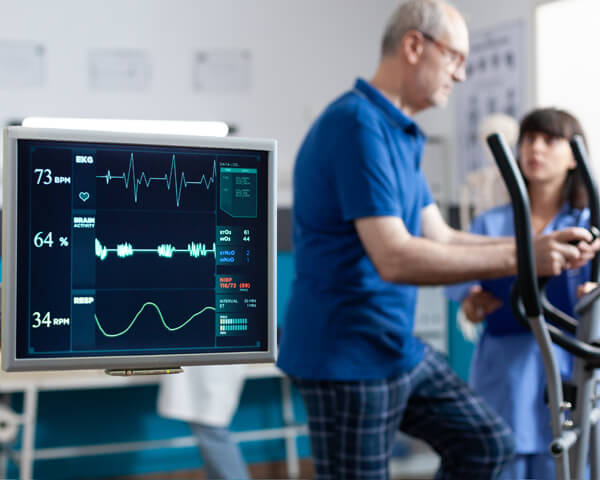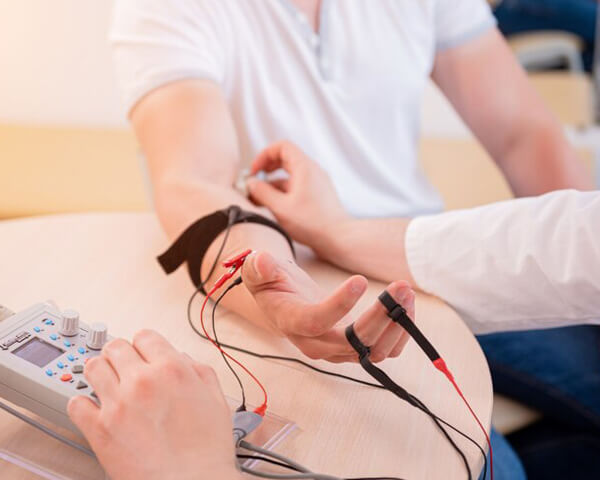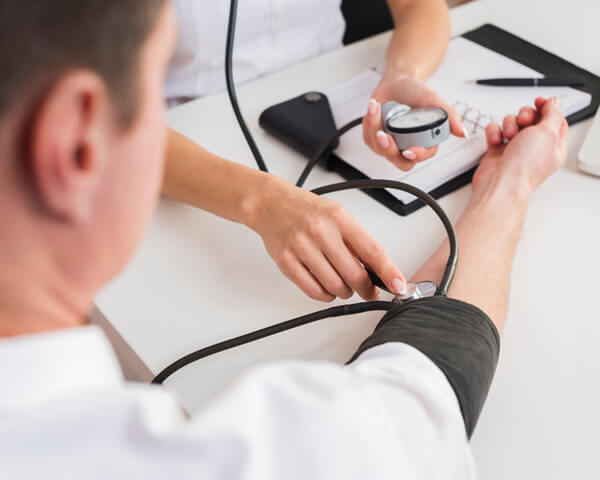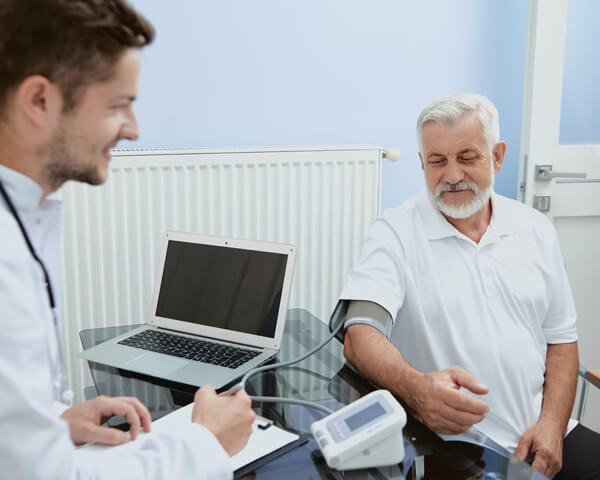Services
Electrocardiogram
An ECG is performed by placing electrodes connected to wires arranged in a standardised pattern on the skin of the chest, arms, and legs. The electrodes detect the electrical signals produced by the heart and send them to a machine that records them. The machine then prints out a tracing of the electrical activity of the heart, which is called an ECG tracing.
An ECG tracing shows the heart’s rhythmand the conduction of electrical signals through the heart. A doctor can use the ECG tracing to diagnose certain heart conditions and to monitor the progress of treatment.
Exercise stress test
An exercise stress test is performed by having you walk or run on a treadmill while your heart rate, blood pressure, and electrocardiogram (ECG) are monitored. The treadmill will be gradually increased in speed and incline following a set protocol until you reach at least above 85% of your predicted maximal heart rate.
If you have any chest pain, shortness of breath, or other concerning symptoms during the test, the test will be stopped.
The results of an exercise stress test can help your doctor diagnose heart conditions and determine the best course of treatment.
Exercise stress tests are relatively safe procedures. However, there is a small risk of inducing heart arrhythmias, causing angina or a heart attack and encouraging transient high blood pressures. The procedure usually takes about 30 minutes. You will be able to go home the same day.
Exercise Stress or Dobutamine Stress Echocardiogram
During an exercise stress Echocardiogram you will be walking or running on a treadmill to increase you heart rate. During aDobutamine stress echocardiogram you will receive Dobutamine, a medication that increases the heart rate and force of contraction of your heart, via an intravenous infusion over about 10 minutes. As your heart rate increases, your doctor will do an Echocardiogram to look at how well your heart is functioning.
If you have significant chest pain, shortness of breath, or other concerning or uncomfortable symptoms during the test, the test will be stopped.
The results of a stress Echocardiogram can help your doctor diagnose heart conditions and determine the best course of treatment. A stress Echocardiogram examination usually takes about 45 minutes. You will be able to go home the same day.
Head Up Tilt table test
A HUT is performed by having you lie down on a table. Your blood pressure and heart rate will be monitored. Then, you will be tilted up to a sitting position and your blood pressure and heart rate will be monitored again. In some cases, you may be given a medication to help lower your blood pressure before or during the test.
If your blood pressure drops significantly when you stand up, you may have orthostatic hypotension. The amount of drop in blood pressure that is considered significant varies from person to person, but it is usually considered to be a drop of 20 mmHg or more in systolic blood pressure (the top number) or a drop of 10 mmHg or more in diastolic blood pressure (the bottom number).
HUTs are relatively safe procedures. However, there are some risks associated with them, such as inducing profound syncope, causing headaches and/or nausea.s.
The examination usually takes about 30 minutes. You will be able to go home the same day.
24 Hour ambulatory blood pressure monitor
It gives a more accurate picture of your blood pressure than a single blood pressure reading. It can identify patterns of blood pressure changes throughout the day. It helps your doctor to diagnose and evaluate the severity of hypertension and assess the effectiveness of blood pressure medication.
A 24-hour ABPM monitor is a small, portable device that you wear around your waist. The monitor is connected to a cuff that is placed on your arm. The cuff inflates and deflates automatically at regular intervals throughout the day and night, measuring your blood pressure.
The monitor stores the data for 24 hours. After 24 hours, you will return the monitor to your doctor. The doctor will download the data from the monitor and look for any abnormalities in your blood pressure readings.
Fitting the monitor usually takes up to about 30 minutes. You will be able to go home the same day.After the procedure, you can go about your normal activities. However, you should avoid swimming or showering with the monitor on.
Holter monitoring
A Holter monitor is about the size of a pager and is worn on a belt or strap around your waist. The monitor is connected to electrodes that are placed on your chest. The electrodes record the electrical signals produced by your heart and send them to the monitor.
The monitor stores the data for 24 hours or longer. After the allotted time, you will return the monitor to your doctor. The doctor will download the data from the monitor and look for any abnormalities in your heart’s electrical activity.
Setting up and fitting the Holter monitor can take around 30 minutes. You will be able to go home the same day. During the monitoring period you should go about your normal activities. However, you should avoid swimming or showering with the monitor on.






